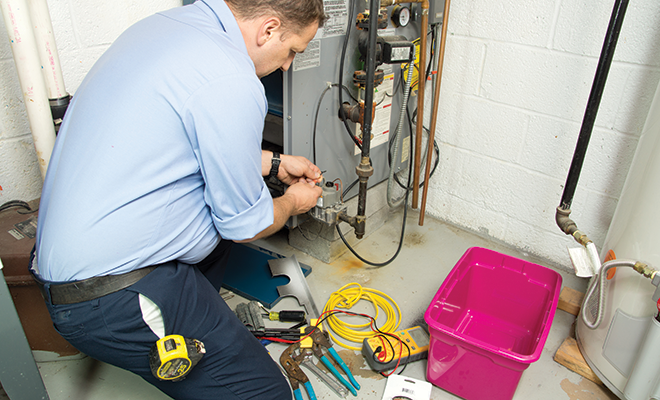
Home warranties provide peace of mind
When we moved into our renovated home 15 years ago, it had up-to-date appliances, a new roof, a new HVAC system and updated plumbing. However, when a hot water heater recently had to be replaced, I started to investigate what I might have saved if I’d had the foresight to put a home warranty in place.
Financial advisors recommend that the average homeowner escrow 1 percent or more of the value of a residence for major repairs and equipment breakdowns. An alternate rule of thumb is to base the amount saved on the square footage of the home, anywhere from $1 to $5 per square foot. If it’s an older home, the wise course is to go with the higher value.
Do the math! If you paid $300,000 for a 3,000-square-foot home, you’ll need to save a minimum of $3,000 every year to maintain your home, even if you don’t spend that much every year. But you can also create peace of mind for your budget by purchasing a home warranty plan.
New homes
In some states, builders are required by statute to provide warranties to purchasers of new homes. Most states have implied warranties, or case law that protects homebuyers from faulty workmanship. Frequently, a builder will provide an express warranty that guarantees the completed structure for a specific time from date of completion, typically one or two years.
In general, an express warranty applies only to the first purchaser of the home. However, Realtors note a trend toward allowing the agreement to transfer to the second or third purchaser if it has not expired.
Homes for sale
Sellers or Realtors often purchase a warranty that covers the house while it’s listed and then extends to the buyers for their first year of ownership. It’s an incentive to buyers and also helps the owners if a system fails while the house is on the market.
Existing residences
Homeowner warranties may be purchased by homeowners at any time, but may not go into effect until a certain time period after purchase. Depending on the company, it can be paid annually or monthly. Average annual costs range between $400 and $1,000, but that will vary by area, type of home, whether it’s single family, duplex, townhouse or condominium, and the level of coverage chosen by the purchaser.
What’s covered?
A warranty does not automatically cover all appliances and systems in the home. Read the policy to verify what systems are included. Some companies allow you to select specific systems and/or appliances, but it’s important to understand that they cover only working appliances and systems. Enhanced or optional coverage can be added for an additional cost.
Service fees
To gauge whether having a warranty would be advantageous for your situation, estimate the cost of repairing or replacing your appliances and heating and cooling systems and compare that to the annual cost of the warranty plus the service fees that would be charged. It could be very valuable if you have multiple issues during one year.
While fees per service call can vary, most range between $60 and $125. Appliances can be repaired or replaced, depending on the policy; some limit replacement appliances to a basic model, but you can pay an additional charge to upgrade the appliance.
Who performs the work?
The warranty company typically requires the homeowner to accept the service providers they choose, which relieves the stress of finding someone to do the work yourself. Check the fine print of the contract to make sure the contractors are required to be licensed, bonded and insured.
Thirty-two states require home warranty companies to be licensed. When you’re doing your due diligence during the selection process, look into the laws of your state that govern home warranty companies.
Positives
For owners of older homes, a warranty program can provide considerable savings in the event of failure of large systems such as the HVAC, plumbing or electrical, items that may not be covered by another insurance policy. Using a company with a reputation for honoring its contracts and providing quick response time can save headaches if your oven fails when you’re expecting guests next weekend.
Claims usually can be made 24 hours a day, either by phone or online. Some offer innovative services such as allowing the customer to monitor repair status by logging into their own online account.
Negatives
Caveat emptor! Make sure you understand what you are purchasing and what is covered. Understand the limits of your policy. Don’t expect an appliance to be replaced if it can be repaired. Other complaints include a lack of control in choosing the service provider, difficulty in filing a claim and poor communication among the customer, service provider and warranty company.
Check out online reviews, Better Business Bureau reviews, the ever-popular Angie’s List and other resources if a home warranty sounds like a good idea. In the appropriate circumstances, the right contract can be worth its weight in gold. HLM
Sources: budgeting.about.com, consumeraffairs.com, investopedia.com, realtormag.realtor.org and zillow.com.







